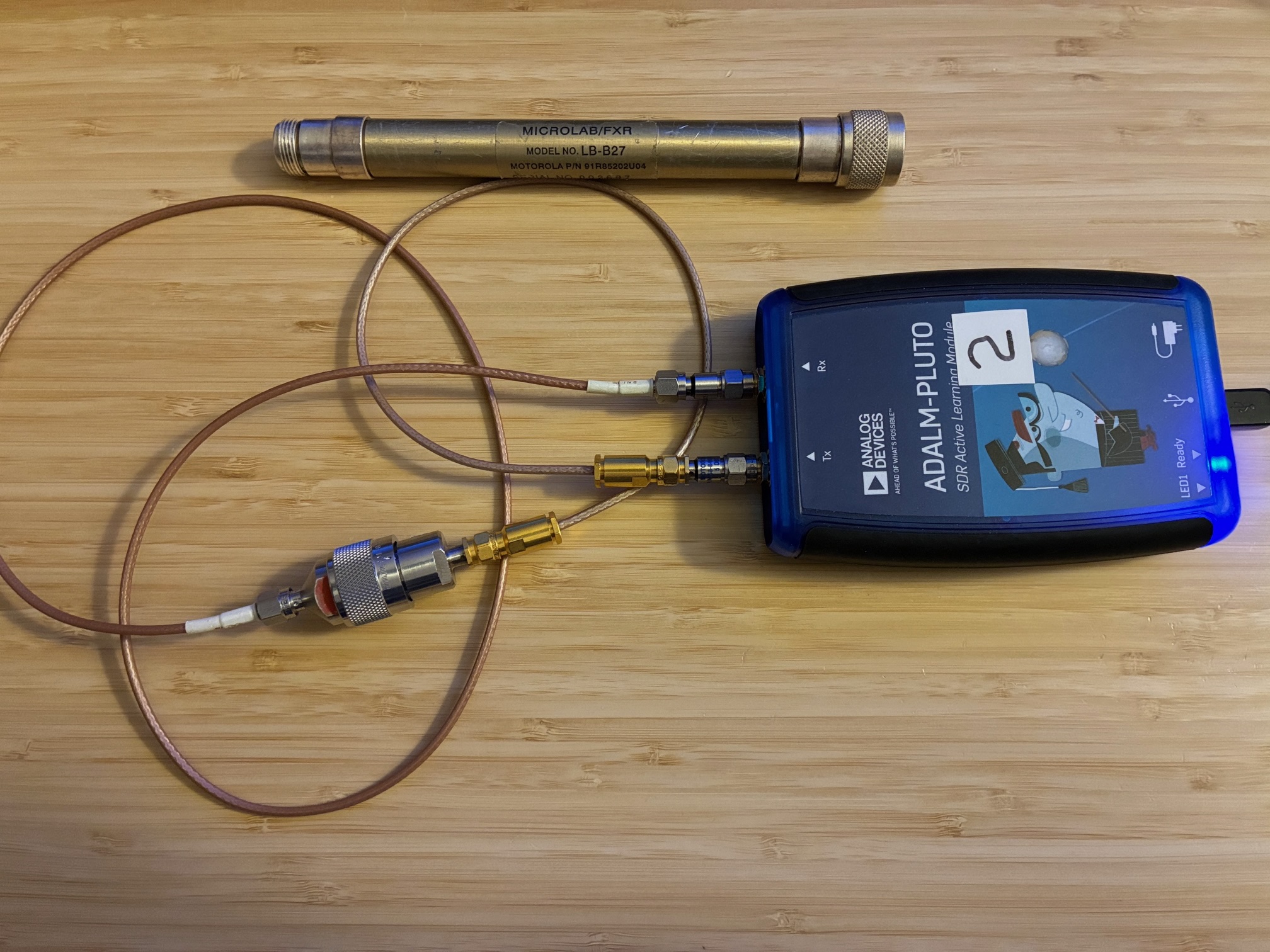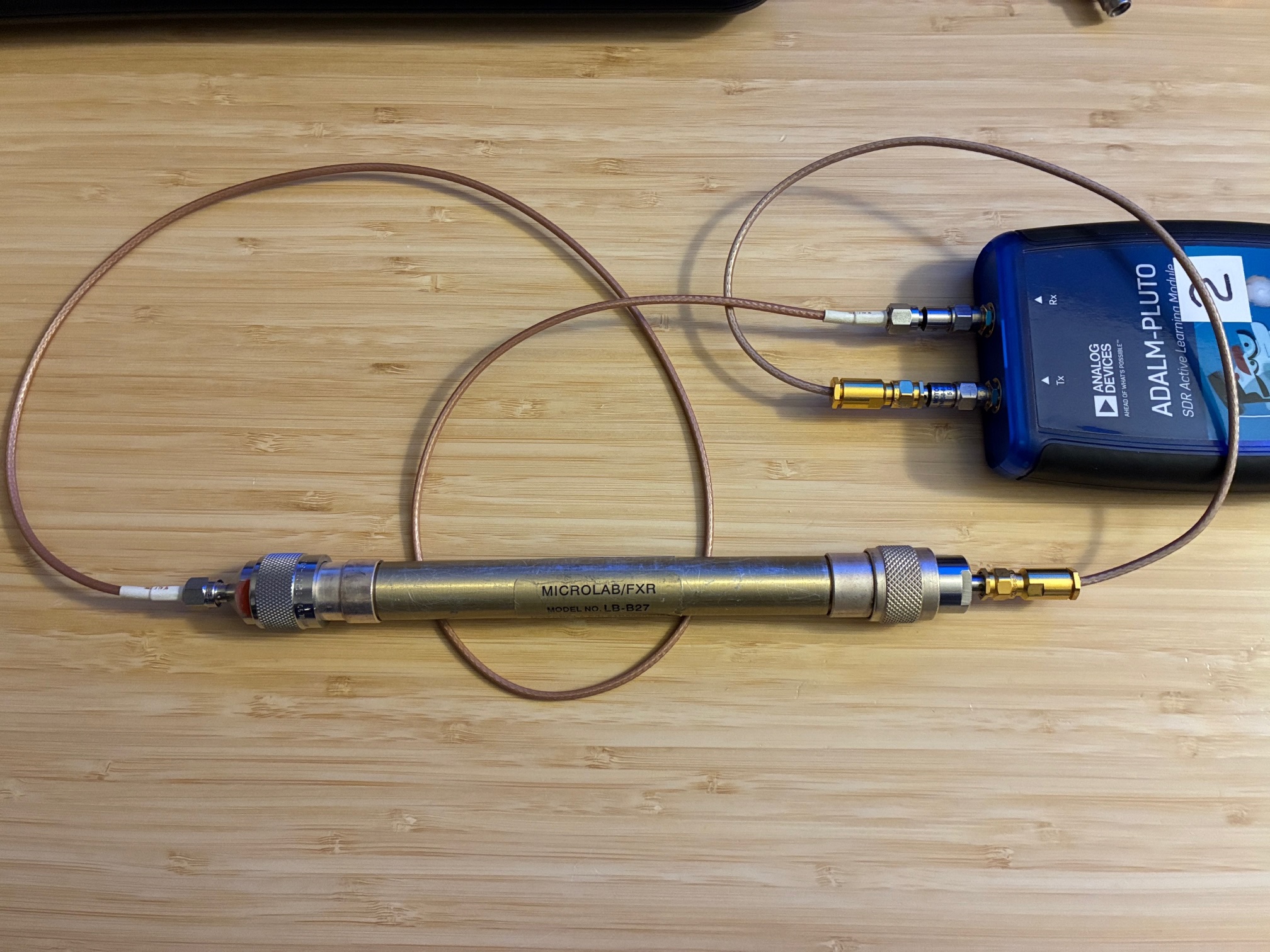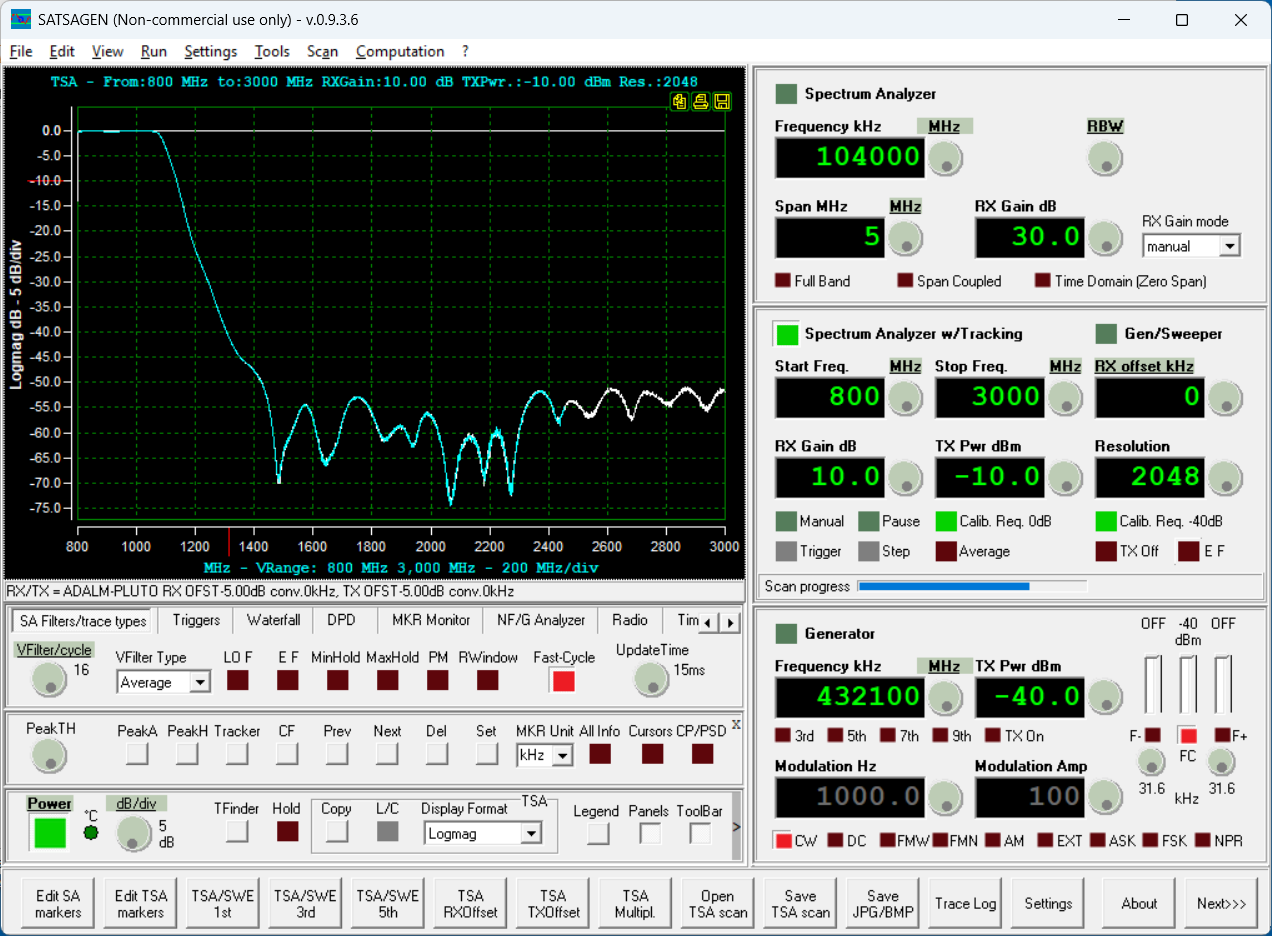Microlab FXR LB-B27 Low Pass Filter
The envisioned 902 MHz Pluto SDR based transceiver would likely benefit from having a low pass filter (LPF) on the transmitter's output (and possibly on the receive path as well). Was thinking about using one of my lab stock Mini-Circuits SMA filters for this and then remembered there was a Microlab FXR LB-B27 N-connector based LPF in the take to ham fest / extras box. This filter has a 3 dB cutoff of approximately 1150 MHz as measured in the past. Let's take another look at this filter to see if it should be included in the 902 MHz transceiver lineup.
Looking on the Microlab FXR website did not yield any data for this filter. (Was hoping since they're still around that they might have some older products / historical data archive. No joy on finding any data for it.) I did find some of these filters for sale up on ebay (apparently having come out of Motorola 800-900 MHz base station products), but did not find any real specs on the filter to-date.
The test setup uses the following items:
- Win11 Ham laptop with SATSAGEN software
- ADALM Pluto SDR (#2 for today's test)
- Two SMA-M to SMA-M coaxial cables
- RF Adapter, SMA-F to N-M
- RF Adapter, N-F to SMA-F
- The filter to be tested
A bandwidth from 800 to 3000 MHz was chosen for the measurement. This covers the fundamental at 902 and the second and third harmonics. The calibration connections for zeroing out the Spectrum Analyzer with Tracking Measurement in SATSAGEN are shown below.

The filter is installed into the RF path and presto! SATSAGEN shows the classic low-pass filter shape in the measurement window / display.

The low insertion loss portion of the display extends to over 1,000 MHz, with the transition band ending and the rejection band (goes down and stays down below or at that level) begins at around 1,400 MHz.

The take away from this measurement is that the filter provides more than 50 dB rejection in the measured stop band (1400-3000 MHz) and likely covers frequencies above that limit. The ebay photos show this filter attached to a high power circulator and termination (load) leading to my guess that I can easily run 40 watts or more through this filter without damaging it. Not having a high power 900 MHz amplifier makes this part over-kill power wise (will be lucky to end up with 33 dBm or 2 watts) in the proposed 902 MHz SDR transceiver...
Test Summary: The Microlab FXR LB-B27 coaxial low pass filter will be a good candidate to filter out excessive transmitter harmonics and may offer additional benefit keeping external signals at higher frequencies (looking at you 5G) out of the Pluto SDR's receiver. Will keep this filter on hand and see if it is actually needed when integrating and using the 902 SDR transceiver.
All author photos captured with an iPhone 16e.